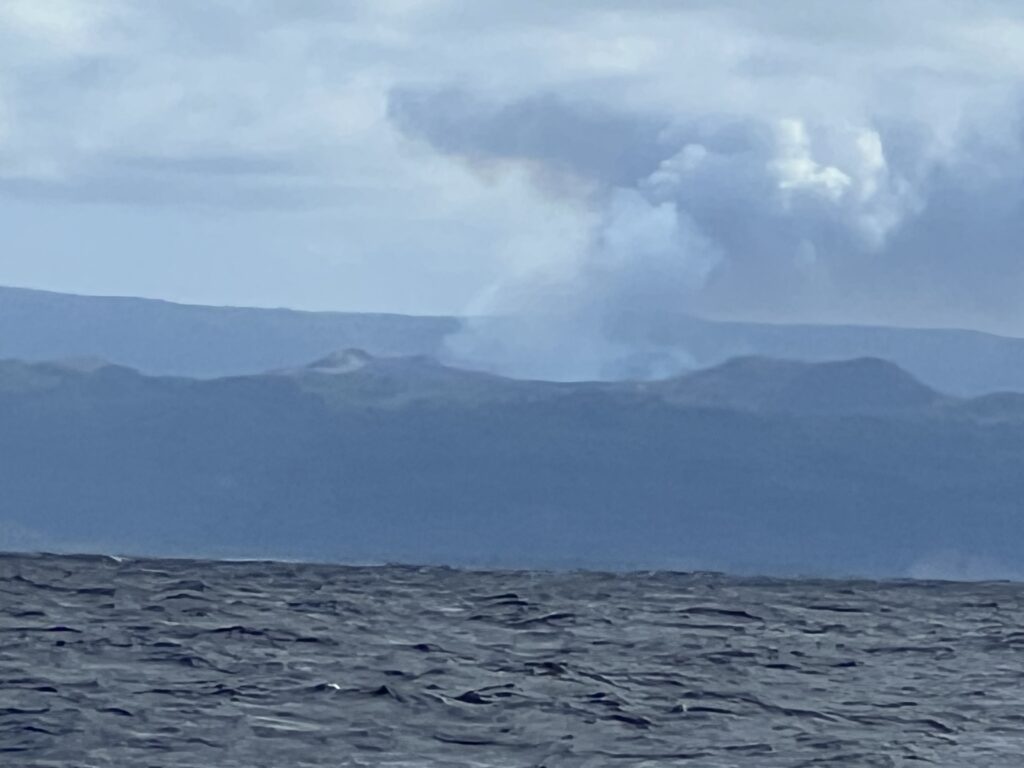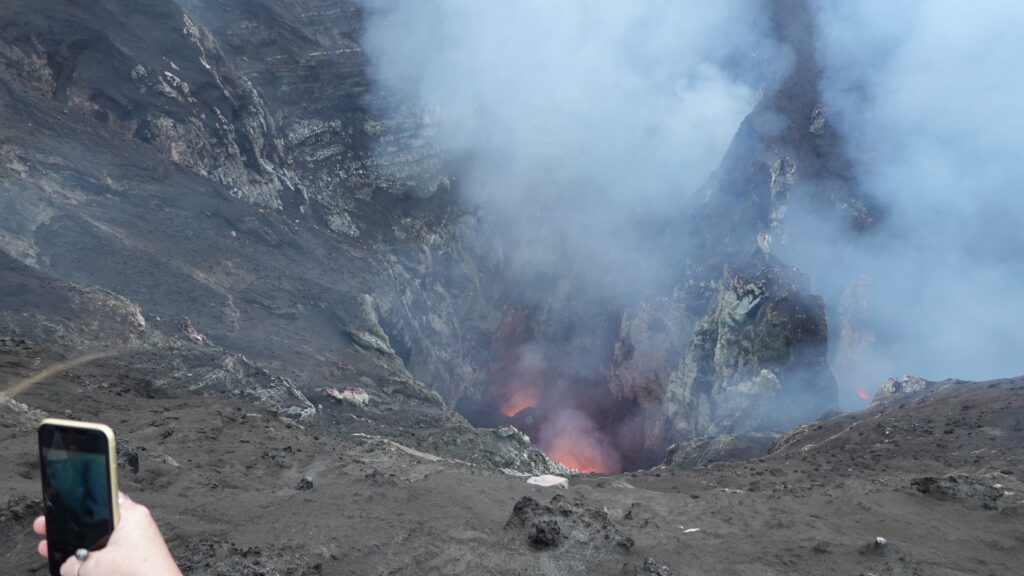Tanna, Vanuatu
“The Volcano: Rescue from Whakaari” is a Netflix documentary about a horrifying day tourists experienced when a volcano erupted. Even though it gave me nightmares for days, I don’t regret watching it, because it led me to reflect on the choices we make when traveling. The film explains the event and interviews the disfigured survivors; other tourists slowly burned to death. Cruise-ship tourists were on a standard excursion to visit a volcano and were caught unexpectedly when the volcano erupted and burped steam. The film led me to examine the naïve trust we grant tour operators and the importance of doing one’s own research while deciding on risky tours, especially in developing countries.

As we sailed towards Tanna, Vanuatu I started doing some research. A tour of Mount Yasur, an active volcano on Tanna, is the main attraction because of the spectacular active eruptions that can be seen from up close. According to a volcano watch site (Smithsonian Institute), the latest report of unusual activity was April 4, 2023, by a pilot who observed ash spewing from the volcano. According to Vanuatu Meteorology & Geo-hazards Department (VMGD), Yasur has remained on Alert Level 2 of 5 (major unrest state) since October 18, 2016. The VMGD reminds the public not to enter the restricted area within a radius of 1 km from the cone.
I checked tour-operator websites and found some exciting descriptions:
“The most accessible volcano in the world”
“A 10 minute climb will see you at the crater’s edge.”
“You can walk to the rim”
“When there is explosion … see the magma.”
I then read an article entitled “Reflections of a volcanologist as a science organization faces charges in the wake of the 2019 Whakaari eruption”, published in “The Conversation”, a leading publisher of research-based news in Australia and New Zealand. It was written by volcanologist Ben Kennedy of University of Canterbury, Australia who studies Mount Yasur.
He states that a tourist trip to an active volcano is never 100% safe. There are always risks. Volcanologists do their best to guide tourist agencies, but volcano science has many unknowns: “we need to do more to translate our hazard numbers into risk numbers for tourist operators and regulating bodies to inform their decisions”. If the regulating body failed in New Zealand, how confident should I be in the regulating body in Vanuatu?
Dr. Kennedy described a trip to Mount Yasar with his wife. She asked him if it was safe. Taking into account the two fatalities he knew about, he calculated a 1 in 100,000 chance they could die—an acceptable risk for a volcanologist with all current information at his fingertips.
I don’t have all the knowledge that an expert volcanologist would have on recent activity reports and therefore must rely on a tour operator to make the safety decision. Vanuatu is a poor country with little infrastructure. When we visited fifteen years ago, we took a fun but sketchy “India Jones-like” tour. Our small group of six tourists joked about the lack of safety as we crawled across a gorge on rope ladders with broken rungs and swam white water through a pitch-dark cave, with inflated flamingos as our life preservers; you get the idea.
I decided that a visit to Mount Yasur was not for me, despite the rave reviews. Simply said, I don’t want to breathe ash dust and sulfur fumes after my poor lungs had to battle COVID during the pandemic. We just experienced some of that ash falling on the boat when the wind veered to the west – some of it was like fine shards of glass. I had a few slivers in my foot from cleaning the boat barefoot. That macroscopic dust must be as bad or worse than breathing asbestos for your lungs.
I had a chance to see Mount Yasur up close from a tour around the bottom that is the only road to town. Around the west side of the volcano there was no road; we drove across an ash landscape devoid of all vegetation that looked like we were on the moon. Therefore, I have seen the rim and mountain of ash.
Viewing a spewing volcano up close is said to be an adrenaline high. I get my adrenaline rush when dolphins lead our boat through blue ocean waters, or when a whale breaches the ocean surface. I will settle for the view I had from the bottom of the volcano and hearing accounts from GLYWO cruisers who take the trip to the rim.
Note: Pierre took the trip last night. The picture below is from his trip and videos of exploding lava that will be shown on my YouTube video on Tanna to be posted this weekend. Pierre agreed that the trip was “sketchy” and some tourists took risks by going very close to the rim of unstable, crumbling rocks.
